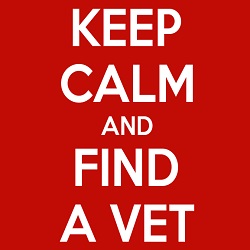Some breed magazines a few years ago carried a short article by Doctors Foster and Smith on dewclaws. Now, these are good vets and good businessmen as well as lovers of dogs, and besides, one of them looks a little like me, so they must be really good, right? However, I would like to give another side of the picture than their surgeon’s view, that of the breeder, handler, trainer, naturalist, and judge. These vets concluded that dewclaws are undeveloped and serve no purpose, and on the basis of this erroneous premise, they advocate removal. I’m not going to play the purist here and now, as I usually do, to insist that the word “dewclaw” should only be applied to the first digit on the rear limb when it exists, and that the one corresponding to a thumb should simply be called a “first digit.” But I am suggesting that the first digit on the front limb is indeed useful and functional. I have bred Terriers, raised and raced Whippets, reared hundreds of my own puppies and adults, worked Shepherds in Schutzhund, handled and judged all breeds, and closely observed all types of dogs. I am sure that vets see some torn small digits, especially the less-developed rear ones, but I have seen countless active dogs break through crusty snow, ice, and very rough brush, work on the sleeve in bite work, and both hunt and lure-course over broken ground with no torn first digits on the forelimb. I have also observed innumerable dogs using that first digit in manipulating bones, sticks up to the size of logs, balls, and other toys. I have seen many dogs use them to get out objects that were stuck between their teeth, and to even to remove (gingerly) material from the eyelids. I have watched them scratch an itch on their muzzles with these little claws, grasp the Schutzhund sleeve, and do other useful, functional things with them. I respectfully submit that you might get a second opinion, especially from an experienced dog trainer/breeder, if your vet wants to remove them.
The forepaw’s first digit (sometimes called the medial digit or thumb) has inward and outward rotator muscles as well as flexor and extensor muscles such as the pollicis brevis. They each have their own ennervation (motor nerves serving to contract those muscles). On the other hand, the first digit (muscles, ligaments, and bones) of the hindpaw is usually absent. In those breeds where it is completely developed, branches of an extensor and a flexor muscle accompany its own muscle, the hallucis brevis, a very weak and “fleshy” organ—so weak and soft, in fact, that it could be said that the dog has no observable motor control of it.
What about those true dewclaws, the ones on the rear limbs? I agree that these seem to be useless appendages, as I’ve never seen any muscular control over them, even in the breeds whose standards require them to be present, such as the Briard or Beauceron or Great Pyrenees. I wonder what reason they are there, too, when they have been lost from the genotype of most other breeds, but I haven’t seen any torn-up dewclaws on such dogs as have them. I haven’t worked those breeds on sheep flocks, so I can’t be as sure, but I tend to give at least mild approval of their recommendations here. I can imagine these lower-to-the ground, non-prehensile claws being snagged in very rough use, such as might accompany the injuries to the stop pads I’ve seen in coursing hounds. Some people have claimed that they interfere with good movement in the ring by brushing against each other and the hock on the opposite leg, but I can tell you I’ve seen many a true, single-tracking, single- or double-dewclaw dog (such as in the breeds mentioned above) moving away with no trace of interference, and I’ve never seen a movement fault that I could attribute to the presence of those claws.
So, do you want to get rid of the ones on the rear in your German Shepherd Dog (usually imported) or other breeds in which the show fashion does not call for them? Go ahead. If you wish not to be bothered with it yourself, or if the “roots” are very developed; i.e., if the bones in that phalange are ossified and/or there is an active growth plate, surgery at the clinic is the way to go. Now, I won’t suggest you do otherwise, because some reactionary young vet might kick up some dust with accusations about you practicing veterinary medicine without a license, but I can tell you what I’ve seen and heard or done, and you can take them as anecdotes rather than advice. Remember that animal husbandry, the father of veterinary practice, is itself a timeless occupation of farmers, shepherds, and drovers; the people who worked with their own animals and successfully treated them were asked by their neighbors for help and gradually became “horse doctors.”
Numerous breeders or owners today still do their own tail docking, ear cropping, medicating, removal of gas from the belly of a colic-stricken sheep or other animal, first aid, even minor suturing. I have neighbors who castrate their own pigs and de-horn their own cattle, and dairymen friends who remove dead or breech calves by reaching in up to their armpits. Therefore, can it be at all surprising that many dog breeders remove dewclaws themselves? They find that if it is tiny and has the appearance of being loosely attached “by a thread,” it is easy to remove a dewclaw at home. The typical practice is to tie a very tight knot around it, as close to the body as possible, and on as young a dog as possible, and as the pup grows the stricture will become relatively tighter. Nutrient supply to the little flap is prevented, and eventually (often in just a few days), the piece dries up and falls off. Most people use dental floss or nylon filament, cutting the ends short enough not to be an attraction to the pup or its dam, and long enough to see that it is still there until the operation is complete. This is the same method used by people who dock their own puppies’ tails, in which case the medium used is most often a very tight rubber band: the unwanted portion of the tail simply falls off. Many prefer this to the sudden, but very slightly traumatic surgical approach at the veterinary clinic. They claim the pup experiences only minor and fleeting discomfort, and there is no need for sutures, usually not a drop of blood, and no infection or bill for antibiotics and an office visit at that time. It’s your dog, and your choice. Make it a wise and humane one.
Incidentally, while in Germany one year for the largest specialty show in the world, I was shown an instrument sold for castration of pigs and sheep, but used by the breeders for docking tails also. It looked like a pliers but had four rod-shaped “jaws” instead of two grippers. When the handles were squeezed hard, the prongs opened (spread) the tough elastic rubber cord into a wider circle (actually a square), and what was before a very small-diameter O-ring was now big enough to fit over a scrotum or tail. When the handles were relaxed, the ring came off and closed amazingly tightly. Animals felt little or no discomfort, but lost those parts that were no longer getting nourishment from the blood supply.










